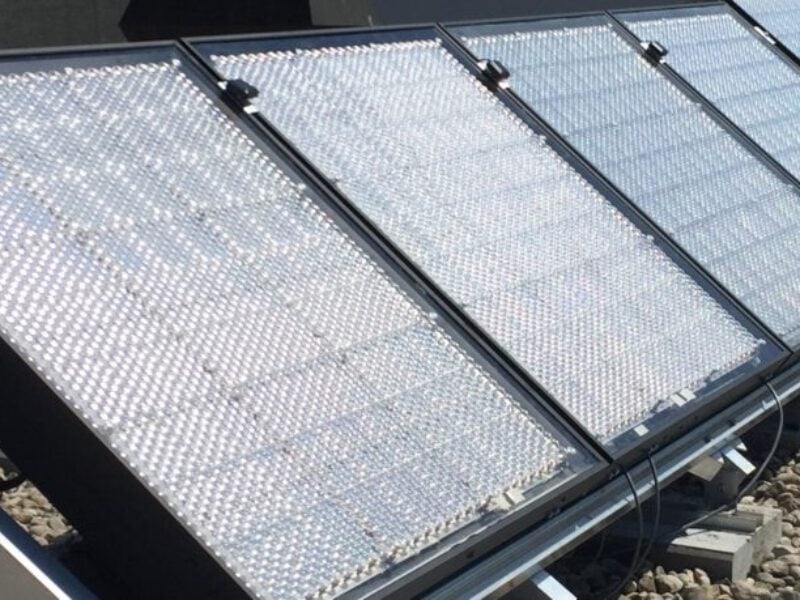
Next generation solar modules set efficiency record at 29 percent
The modules by Insolight, a spinoff from EPFL in Lausanne, were validated by the Solar Energy Institute of the Universidad Politécnica de Madrid (IES-UPM), setting the stage for large-scale industrialization and presnting a challenge to developing perovskite and tandem photovoltaic cells.
Insolight is taking a different approach by using a patented optical system that concentrates light onto an array of tiny space-grade multi-junction photovoltaic cells. While today’s rooftop standard modules typically show an efficiency of 17-19%, the development from a lab prototype took two years. The panel’s protective glass embeds a grid of lenses which concentrate light by several hundred times, and to follow the sun’s movement, the cell array shifts horizontally by a few millimeters each day.
The lens system means that less than 0.5% of the panel has to be covered with cells to reach optimal performance, allowing the use of high efficiency space-grade solar cells in the mainstream market. The whole system is then encased in a slim module, similar to standard solar panels, which keeps mechanical parts protected. Insolight’s product has the same form factor and appearance as standard panels and can be easily mounted in the industry-standard configurations, on rooftops or on the ground.
“For the rooftop market, the real challenge is not only to increase efficiency but to do so in a way that combines cost-effectiveness, ease of installation and durability”, said Laurent Coulot, CEO of Insolight.
Modules were also tested in real-life conditions for a whole year on a pilot installation at the Swiss Institute of Technology in Lausanne (EPFL) and successfully endured heat-waves, winter conditions, and storms.
“Over the last two years, our team has brought the product from a lab prototype to a full-size solar panel, connected to the grid and monitored 24/7. Our system has been extensively tested and we are now preparing an industrialization strategy for large-scale production”, said Mathieu Ackermann, CTO of Insolight.
In order to speed up its market entry, Insolight is now discussing with several solar manufacturers to license its technology. “Our technology involves a few extra assembly steps, which can be added at the end of existing production lines, taking leverage of production capabilities already in place,” said Coulot, who expects to see the first Insolight product hitting the market by 2022.
Insolight is supported by several programs from the European Commissions (H2020,Solar-ERA.Net,Eurostars,Climate KIC), national programs (Innosuisse, Innovaud, SPEI, FIT,VentureKick, CleanTech Alps), the European Space Agency (ESA BIC) and EPFL (Innogrant).
Related stories:
- OXFORD PV SEES RECORD 28 PERCENT PEROVSKITE EFFICIENCY
- THIN FILM TANDEM PEROVSKITE SOLAR CELL PUSHES RECORD
 If you enjoyed this article, you will like the following ones: don't miss them by subscribing to :
eeNews on Google News
If you enjoyed this article, you will like the following ones: don't miss them by subscribing to :
eeNews on Google News




